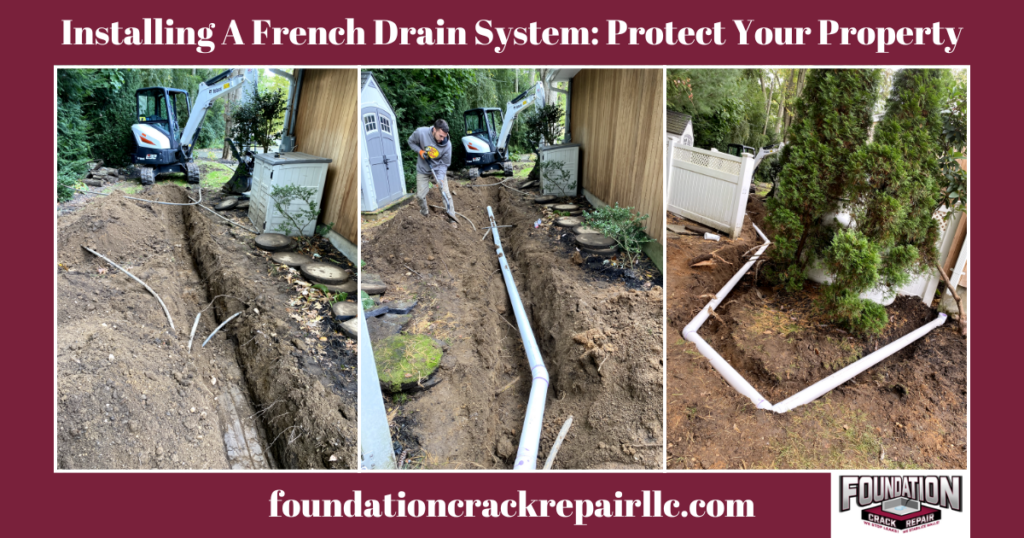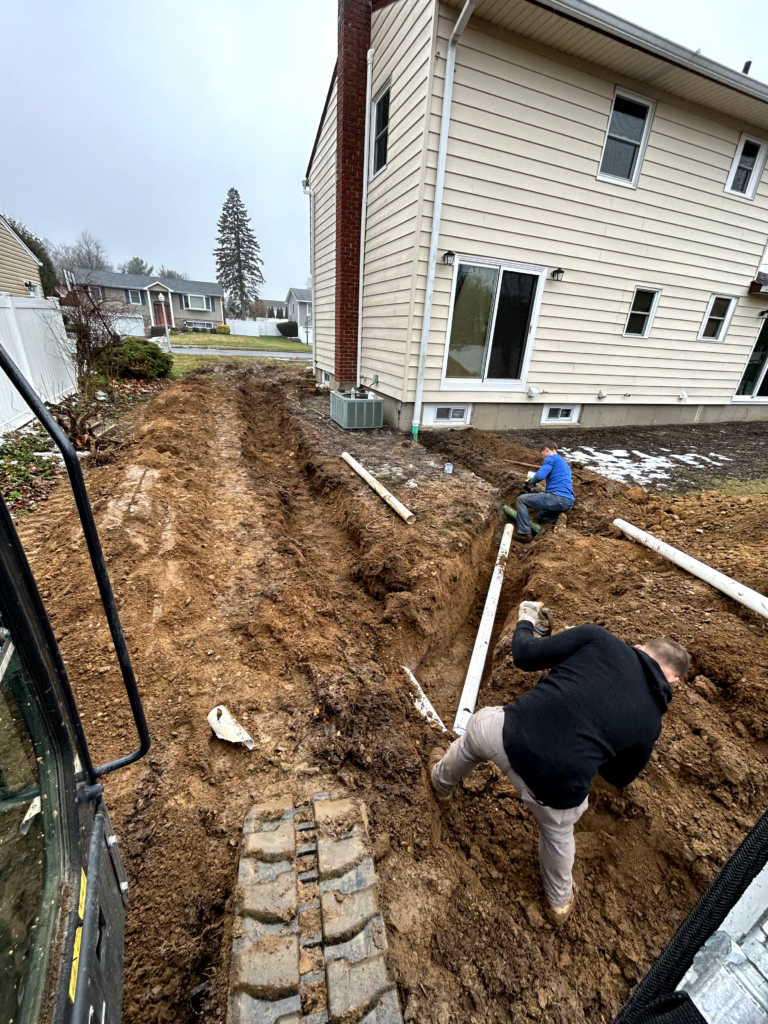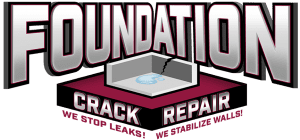
Protecting your property from water damage is essential for maintaining its structural integrity and value. At Foundation Crack Repair, we specialize in providing effective solutions to safeguard your home against water intrusion. One of the most efficient methods to achieve this is by installing a French drain system. This ingenious drainage solution redirects water away from your foundation, preventing costly damage and ensuring a dry, stable environment.
In this blog post, we’ll explore the benefits of a French drain system, how it works, and why it’s a smart investment for any homeowner. Discover how Foundation Crack Repair can help you protect your property and enhance its longevity with a professionally installed French drain system.
Understanding the Power of French Drain Systems
The power of French drain systems should never be underestimated! These ingenious drainage solutions are true unsung heroes when it comes to protecting your home and property from the devastating effects of excess water.
A properly installed French drain system is an absolute game-changer, offering a multitude of benefits that can transform both your indoor and outdoor spaces. From safeguarding your basement from flooding to whisking away surface water that threatens to wreak havoc on your yard, these systems are the ultimate defense against moisture-related problems.
The versatility of French drains is also truly remarkable. Whether you’re battling stubborn yard puddles, managing heavy runoff, or shielding your home’s structural integrity, these drainage workhorses rise to the occasion. Their ability to seamlessly integrate with your existing landscape is the icing on the cake.
Identifying the Signs: Do You Need a French Drain System?
Let’s dive into the telltale signs that indicate a French drain could be the answer to your water woes:
- Pooling Water: If you notice water pooling in your yard, especially after heavy rain, it may indicate poor drainage that a French drain could help solve.
- Soggy Lawn: A consistently soggy lawn, even days after rain, suggests that water is not draining properly.
- Basement Water Issues: Water seepage or flooding in the basement is a strong indicator that groundwater is not being directed away from your home.
- Foundation Cracks: Cracks in your foundation can result from water pressure buildup due to poor drainage. A French drain can help alleviate this pressure.
- Erosion: Significant soil erosion around your property, especially near the foundation, points to water drainage problems.
- Mildew and Mold: Persistent mildew and mold growth in basements or crawl spaces can be a sign of moisture issues that a French drain can address.
- Bad Odors: Musty odors in your basement or around your property often indicate standing water or moisture problems.
- Leaky Windows or Doors: Water leaking through basement windows or doors during heavy rains suggests improper drainage.
- High Water Table: If you live in an area with a high water table, a French drain can help manage groundwater levels and prevent flooding.
- Neighbors’ Drainage Issues: If nearby properties have drainage problems, it’s possible your property could be affected too, necessitating a French drain.
A French drain system can intercept this excess water and redirect it away from your home, preventing costly water damage and preserving the structural integrity of your property.
Installing a French Drain: A Step-by-Step Guide
Here’s a step-by-step process to guide you through the installation:

- Assess the Area: Carefully examine the problem area and determine the best location for the French drain. Consider the slope of the land and the direction you want the water to flow.
- Plan the Layout: Decide on the length and depth of the French drain based on the size of the problem area. Sketch out the planned route to ensure it directs water away from your home or other structures.
- Excavate the Trench: Use a shovel or a small excavator to dig a trench along the planned route. The trench should be 8 to 12 inches wide and slope downward at a rate of 1 to 2 percent.
- Install the Perforated Pipe: Place the perforated drain pipe in the trench, ensuring it has a continuous downward slope. Connect the sections of pipe using couplings.
- Add Gravel: Fill the trench with 3 to 4 inches of washed gravel or crushed stone. This will allow water to flow freely into the pipe.
- Cover with Landscape Fabric: Lay a piece of landscape fabric over the gravel to prevent soil from clogging the drain.
- Backfill the Trench: Fill the remaining space in the trench with soil, taking care not to damage the pipe or fabric.
- Create an Outlet: Ensure the French drain has a proper outlet, such as a dry well or a discharge point that directs water away from your property.
These are the steps we follow at Foundation Crack Repair to effectively addresses water drainage issue.
Essential Tools and Materials Needed
When tackling a French drain project, having the right tools and materials on hand is essential for success. The key components you’ll need include:
- Perforated Drain Pipe: The foundation of a French drain system is the perforated pipe that collects and channels water away from the problem area. Choose a pipe size appropriate for your project needs.
- Drainage Gravel: Surround the perforated pipe with a layer of washed drainage gravel to allow water to easily flow into the pipe.
- Landscape Fabric: Wrap the gravel-filled trench in a landscape fabric to prevent soil from clogging the system over time.
- Trench Digging Tools: You’ll need shovels, picks, and other tools to dig the French drain trench to the proper depth and width.
With the right French drain supplies and equipment, you can ensure your project is completed properly and functions effectively for years to come.
Maintaining the Efficiency of Your French Drain: Tips and Tricks
Ensuring your French drain operates at peak efficiency is crucial to preventing water damage and flooding around your property. Here are some informative tips and tricks to keep your French drain system running smoothly:
- Regular Inspections: Periodically inspect your French drain to check for any clogs, debris, or damage. This will help you identify and address issues before they become major problems.
- Clearing Blockages: If you notice the drain is not functioning properly, use a drain snake or high-pressure water hose to clear any blockages that may have accumulated over time.
- Monitoring Performance: Pay attention to how quickly the water drains after heavy rainfall. If the drain seems to be taking longer than usual, it may be time for a more thorough cleaning or repair.
- Preventative Maintenance: Consider installing a French drain cover or grate to keep large debris from entering the system. Regularly removing leaves, twigs, and other organic matter can also help maintain optimal performance.
Once we are finished installing a French drain system we continue to provide follow up maintenance to ensure the longevity of your property.
Unleash the Transformative Power of a French Drain
Installing a French drain system is a proactive step to safeguard your property from water damage. By effectively redirecting excess water away from your home’s foundation, you can prevent issues such as basement flooding, soil erosion, and structural damage. At Foundation Crack Repair, we understand the importance of maintaining a dry and secure home environment.
Our team of experts is dedicated to providing tailored solutions that address your specific drainage needs. Don’t wait until water damage becomes a costly problem—contact Foundation Crack Repair today to discuss how a French drain system can protect your property for years to come.
